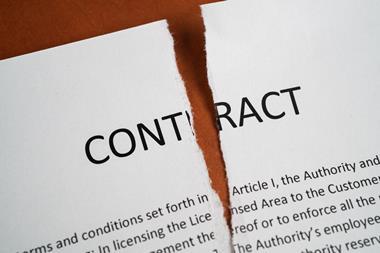The evidence will help shape a formal consultation later this year for potential improvements in professional indemnity insurance arrangements
Property law regulator the Council for Licensed Conveyancers (CLC) is launching a call for evidence on the operation of its Participating Insurers Agreement (PIA) for professional indemnity insurance (PII) ahead of a formal consultation later this year.
The regulator is asking insurers, regulated practices, consumers and their representatives, as well as other stakeholders, for their views on the operation of the PIA and associated insurance minimum terms and conditions, to ensure they are fit for purpose for the next five years.

The evidence will pave the way for a formal consultation later in 2021.
CLC hopes to have any proposed changes arising from the consultation fully implemented ahead of the next professional indemnity insurance renewal deadline on 1 July 2022.
Submissions should be sent via email by 31 July 2021.
Sheila Kumar, chief executive of the CLC, said: “As a result of market pressures over recent years, we have seen examples of firms being refused cover because of work carried out in the past, even if any notified circumstances do not proceed or they no longer undertake that type of work.
“In such instances, insurers seem happier to shoulder the risk in run-off rather than continue to work with an ongoing business.”
The regulator introduced its PIA in 2016, enabling CLC regulated practices to seek PII cover from any insurer that is part of the scheme.
It sets out a minimum level of cover of £2m for every claim.
The agreement also integrates run-off cover for closing firms so that no premium is payable at the point of closure, with cover for the six-year period of £2m in aggregate.
Kumar added: “Another issue is that new and transferring firms have found it difficult to secure quotes in a timely way from participating insurers.
“This could be stifling innovation and diversity of provision, reducing consumer choice. It adds a quasi-regulatory barrier to market entry and participation that is not guided by the regulatory framework intended to promote public and consumer interest.”
CLC welcomes evidence on any point, but it is especially interested in exploring views on the following questions:
- Since the current scheme was introduced in 2016, has this been a profitable market in which insurers wish to participate?
- How have insurers priced the risk of run-off into policies?
- Are there alternatives to integrated run-off cover that offers the same certainty around consumer protection?
- Have insurers priced the risk of policies for practices that only undertake wills and probate work separately to those practices which undertake conveyancing work?
- How could the regulator and insurers work more closely together to identify and manage risk?
- Are there adjustments to the CLC’s PII scheme that would make it easier for new practices to secure prompt quotations and agree cover?
- Is the £2m aggregate limit for run-off still appropriate?
- How could barriers to market entry and participation be lowered where the regulator is content with the proposal for a new practice or the continuation of an existing one?
- How can the CLC facilitate a smoother process for transfer of practices from one regulator to another?
- Following clarification of cover for cyber-related losses, currently the subject of a separate consultation, should the CLC take additional steps to secure consumer protection as digitisation of legal services speeds up?












































No comments yet